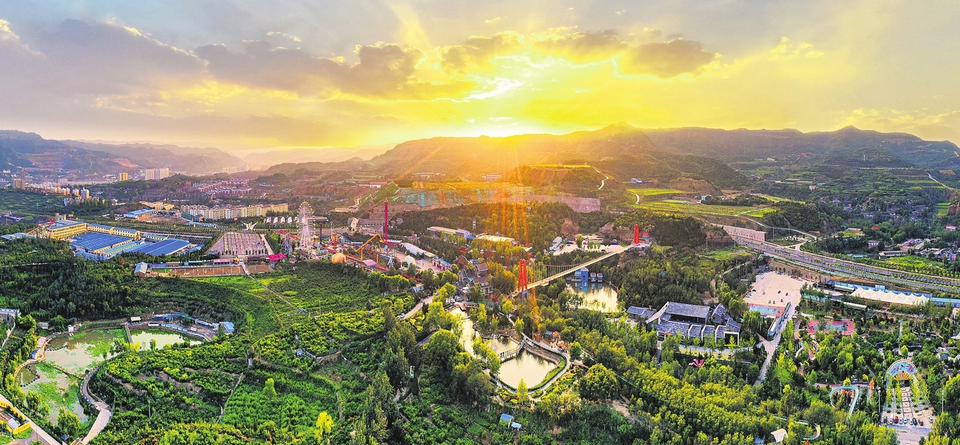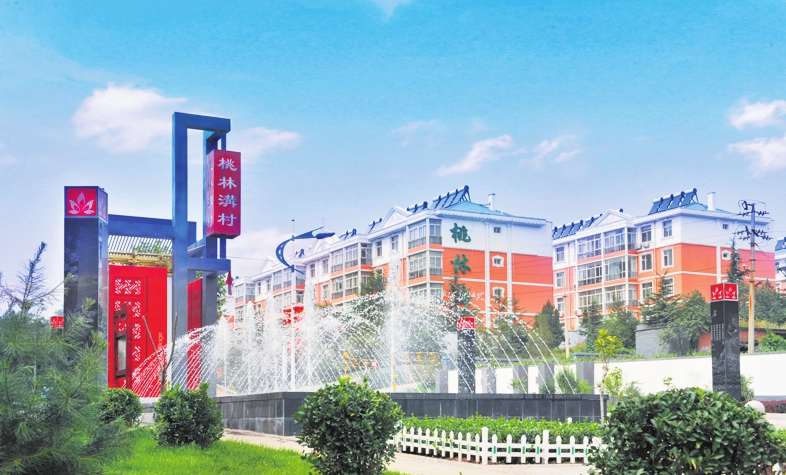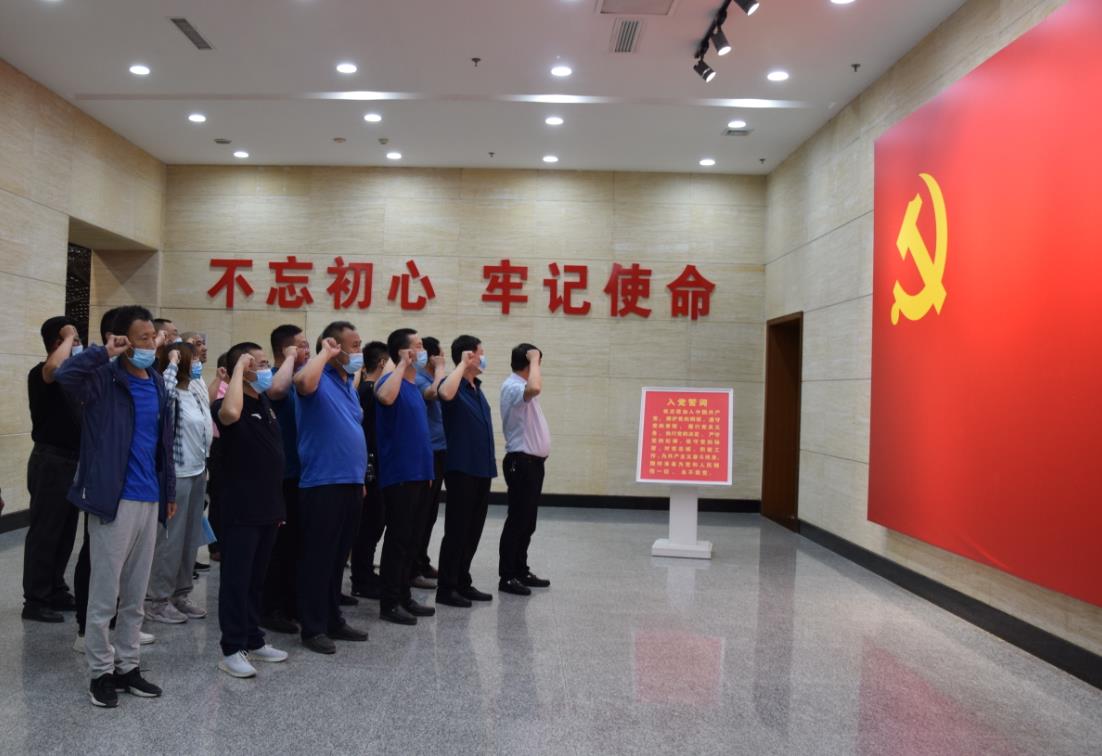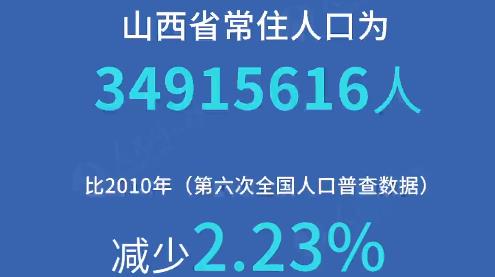
Tourism facilities in Taolingou village in Yangquan city are developed according to standardized processes.HAN JICHUAN / FOR CHINA DAILY

Taolingou village uses a standardized approach to develop its residential facilities. HAN JICHUAN / FOR CHINA DAILY
World Standards Day in China was held in Taiyuan, Shanxi province on Oct 14, marking the first time the event was celebrated in a province outside the capital city of Beijing.
The event, sponsored by the International Organization for Standardization and other international organizations, is held in ISO member countries and regions in cooperation with local industrial authorities to highlight the importance of standardization in industrial development.
A development research center of the China National Institute of Standardization was established in Taiyuan on the same day.
The moves show that Shanxi has made great achievements in standardization in its process to transform from an energy resource-reliant province into an economy with diversified sectors, according to local officials.
Shanxi began its pilot practice for industrial standardization in 2018, becoming the first province in China's central and western regions to go in this direction.
During the past three years, Shanxi has taken charge of or got involved in the formulation of 10 international standards, 149 national standards, 191 industrywide standards and 631 local standards, covering areas such as agriculture, tourism, manufacturing, mining and social administration, according to local authorities.
Tian Shihong, vice-minister of the State Administration for Market Regulation and chief of the Standardization Administration of China, praised Shanxi's efforts in promoting regional development with standardization.
"Over the past three years, Shanxi has accumulated rich experience that is conducive to promoting standardization throughout the country by exploring and presenting its innovative practices, especially in the area of using standardization to help economic transformation,"Tian said.
During the celebration, many local entrepreneurs shared their examples of best practices in standardization.
Ren Cuiying is a senior engineer from Taiyuan Iron and Steel Group. She told visitors who were on a tour of the company, which was a part of the celebration, that the group's stainless steel branch has set more than 70 percent of the standards for China's stainless steel sheet products.
The executive also introduced the company's famed "hand-torn steel" to the visitors. With a thickness of 0.02 millimeters, or one-third of the diameter of a human hair, the product can be easily torn apart by hand.
"The formal name of the product is broadsheet super-thin stainless steel foil. It is a high-end and standard-setting product in the industry," Ren said, adding the product can be used in the fields of aerospace, electronics, petrochemicals and automobiles.
"Most of the steel foil products made in China are more than 0.038 mm in thickness. We are among the few companies in the world capable of producing soft steel foil of 0.02 mm," Ren said.
In Yangquan city in the east of Shanxi province, there is a village using standardization to develop its tourism industry.
The village of Taolingou, which literally means peach forest valley, got its name because it is home to wide expanse of peach trees. It is an attractive destination to tourists when the peach flowers bloom in spring and the peaches mature in summer.
According to Li Naizhu, Party secretary of the village, the local residents are not satisfied with the inflow of tourists only in the blossoming and harvest seasons.
"We want to make Taolingou a year-round attraction. So we have hired an expert team to plan our tourism development," Li said, adding that their suggestion is to explore a new growth model with standardization.
"We have used a standardized approach for designing tourist routes, products, services and facilities.
"We have built a water amusement park, a horse racing track and other amusement facilities according to the industry's standards," Li said.
With these facilities in place, plus standardized services, the village welcomed more than 200,000 visits in 2019, a 30 percent increase from the previous year. Per capita net income of the villagers surpassed 20,000 yuan ($3,000), according to Li.
"Tourism has become the largest industry in our village," Li said.
In addition to upgrading tourism, the village also uses standardized processes to improve the living environment for local residents.
For instance, the village's school, kindergarten, elderly care center, clinic and roads have all been built or renovated according to related standards, Li said. He added that there are also training courses to help public service workers standardize their services.
Guo Yanjie contributed to this story.
By YUAN SHENGGAO
 山西路桥:党建引领 建好“四好农村路”山西路桥建设集团党委扎实开展“党建质量提升年”,实施“六大工程”,立足“十四五”高质量、高速度、高效益发展的战略基点,全面提高党建质量和党建引领发展水平,为打造“国内一流的交通基础设施投资、建设、施工现代化企业集团”提供坚强政治保障。
山西路桥:党建引领 建好“四好农村路”山西路桥建设集团党委扎实开展“党建质量提升年”,实施“六大工程”,立足“十四五”高质量、高速度、高效益发展的战略基点,全面提高党建质量和党建引领发展水平,为打造“国内一流的交通基础设施投资、建设、施工现代化企业集团”提供坚强政治保障。
 常住人口3491万 山西人口普查数据"出炉"山西省统计局向社会通报山西省第七次全国人口普查主要数据。数据显示,山西省常住人口为34915616人,比2010年(第六次全国人口普查数据,下同)减少2.23%,年平均减少0.23%。山西省常住人口总量减少,主要受人口流动变化等因素影响。
常住人口3491万 山西人口普查数据"出炉"山西省统计局向社会通报山西省第七次全国人口普查主要数据。数据显示,山西省常住人口为34915616人,比2010年(第六次全国人口普查数据,下同)减少2.23%,年平均减少0.23%。山西省常住人口总量减少,主要受人口流动变化等因素影响。